Matching the nozzle to the target and Product;New AI Nozzles - how they work and respond to different products and use situations
| Date: 13 Jun 2008

Paul Miller, Silsoe Spray Applications Unit (part of The Arable Group)
Matching the nozzle to the target and product: new AI nozzles – how they work and respond to different products and use situations
Air induction nozzles have been developed primarily to give high levels of drift control with the minimum risk to product efficacy in a wide range of situations. They consist of:
• an inlet orifice (or orifices) that form the first part of a Venturi and regulates the flow through the nozzle;
• an air inlet through which air is drawn by the action of the Venturi;
• a mixing section where air and spray liquid are mixed together;
• a relatively large outlet orifice that forms a spray sheet for flat fan air-induction nozzles that then breaks up in to large droplets that have air inclusions within them.
By comparison with droplets in sprays from conventional nozzles, droplets from air induction nozzles are relatively large, contain more air inclusions, are released from the nozzle travelling more slowly and slow down more rapidly between the nozzle and the target. This means that at the target surface, the droplets arrive relatively slowly and with a droplet structure that is able to absorb energy and hence reduce the risk of droplet bounce or shatter.
Measurements with a range of commercial air induction nozzles have shown a wide variation in performance from nominally the same specification of nozzle. This difference in performance has implications for both the spray deposit and level of drift control that can be achieved. Nozzle designs giving a relatively small droplet size distribution for an air induction nozzle will give more drift but will generally achieve substantial drift reductions when compared with conventional nozzles.
The relatively large droplet size from air induction nozzles has implications for the spray deposit distribution, with those designs giving a relatively small droplet size distribution generally giving higher levels of efficacy. This is probably mainly due to less variability of deposit at the target surface. Surface coverage has been shown to be mainly influenced by application volume although there are differences between nozzles. Higher levels of coverage are achieved when using conventional nozzles generating a smaller mean droplet size. Air-induction nozzles generating a relatively small droplet size will also give better coverage than one giving a relatively large droplet size. For many products it is likely that coverage alone is not the main factor influencing efficacy and that air-induction nozzles can achieve acceptable levels of control.
It is now recommended that air induction nozzles be used for all applications to UK cereal crops once a crop canopy is established – i.e. all fungicide applications and late season herbicide applications. They are not recommended when applying herbicides to small weeds, particularly grass weeds at an early stage of growth and there is some evidence to suggest that the application of pre emergent herbicides is better as a fine spray from a conventional nozzle particularly in coarse seed bed conditions.
The performance of air induction nozzles is also influenced by:
• physical characteristics of the spray liquid;
• the operating pressure.
The effects of spray liquid properties are complex because of conflicting effects on the liquid sheet prior to spray break up and the generation of air included droplets. Overall effects are therefore not easily predicted. Increasing liquid pressure generally results in a smaller droplet size distribution and an increase in droplet velocities from the nozzle.
Contact details
Paul Miller
Silsoe Spray Applications Unit (part of The Arable Group)
Building 42, Wrest Park, Silsoe, BEDFORD, MK45 4HP, UK
Email: paul.miller@thearablegroup.com
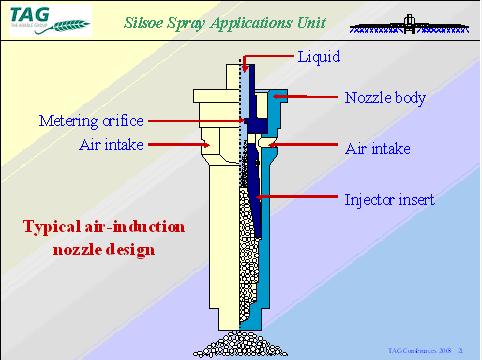
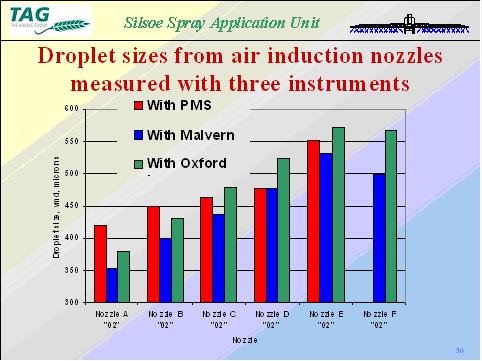
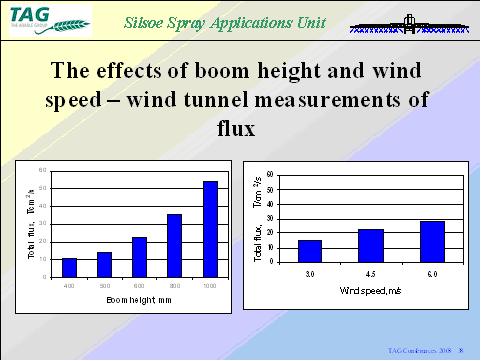
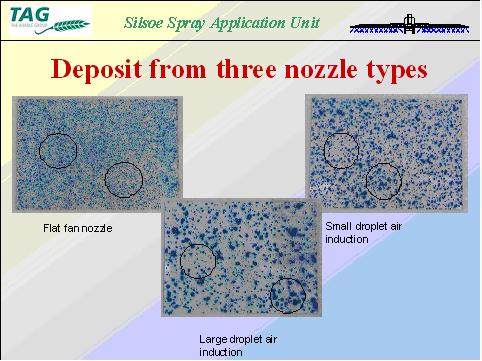
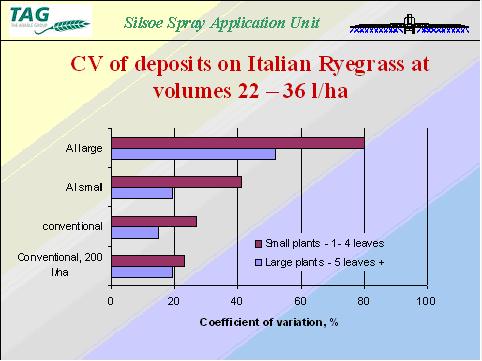
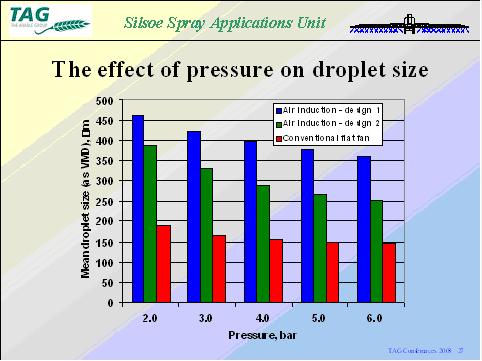
Was this page helpful?
YOUR FEEDBACK
